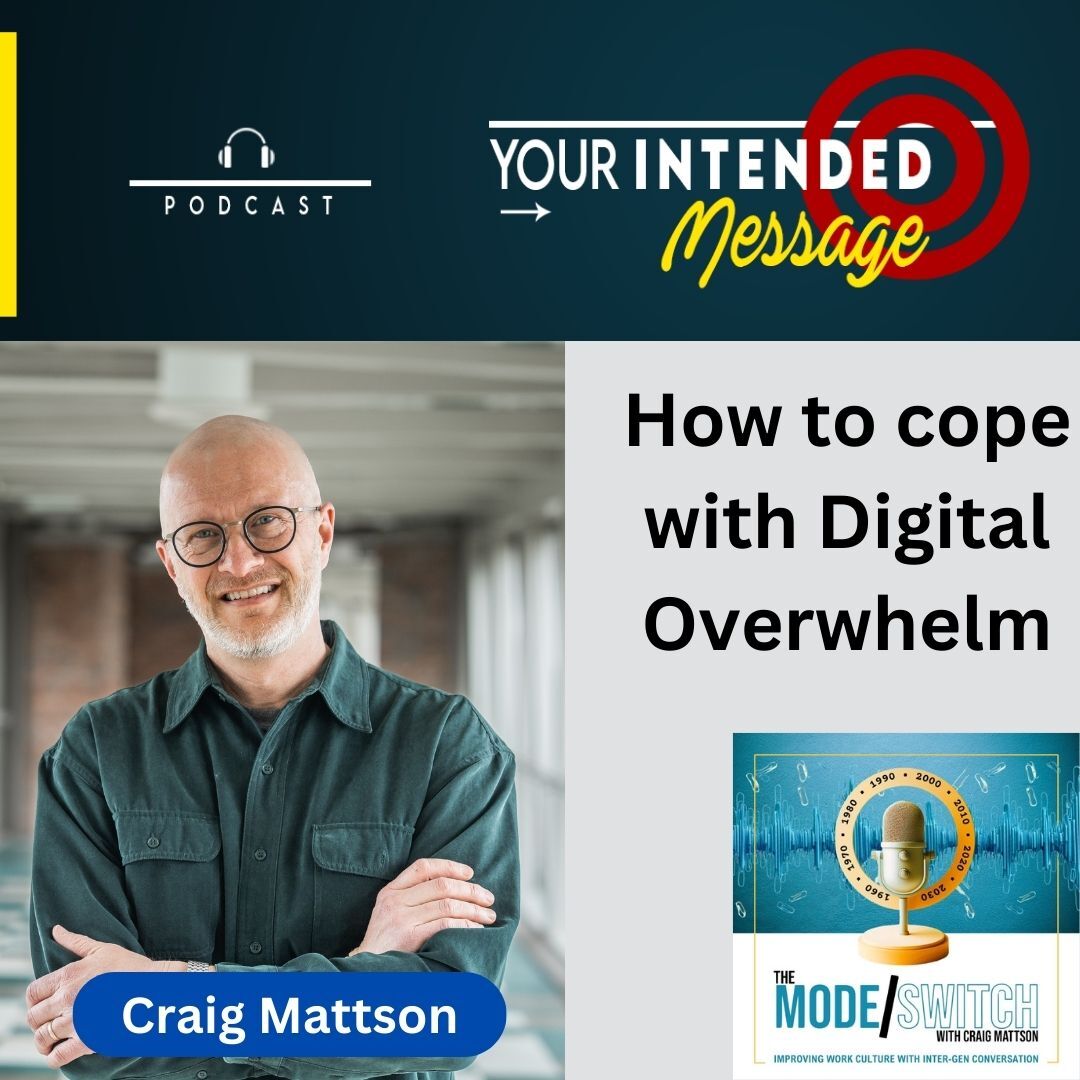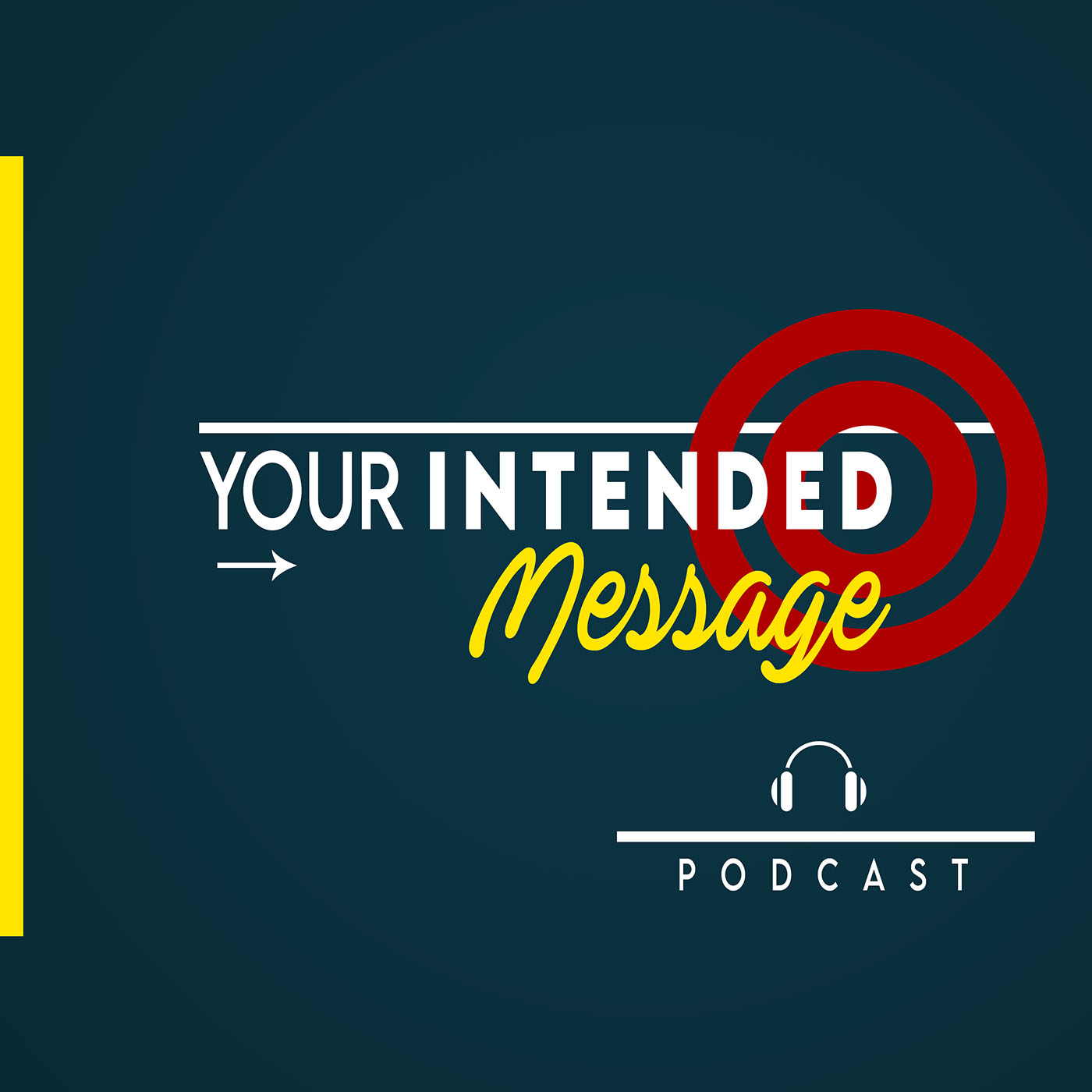
Episode 251 (Craig is based in Grand Rapids Michigan)
-----
In this conversation with Craig Mattson we explore:
Why acknowledging digital overwhelm is the first step toward healthier communication.
The limitations of digital minimalism and the need for digital flexibility.
Six communication modes professionals rely on to cope with digital stress.
The importance of understanding your default communication style.
How to avoid contributing to others’ communication overload.
Simple techniques to reset a failed conversation.
Why switching between communication modes helps maintain humanity in digital spaces.
The power of treating all communication as a gift — even criticism.
-----
About our guest Craig Mattson:
Craig is the author of "Digital Overwhelm". He writes, researches and teaches at Calvin University.
You can buy his book, Digital Overwhelm here.
Learn more about his programs and register for his newsletter here
https://www.themodeswitch.com/
https://www.digitaloverwhelm.com/
-----
Acknowledge the Overwhelm
Being overwhelmed by digital inputs is normal; the first step is admitting it.
Digital Flexibility vs. Digital Minimalism
Minimalism helps, but flexibility is key to adapting and connecting with others.
Avoid Contributing to Others' Overwhelm
Be mindful of how your communication style might stress others.
Understand Your Default Communication Mode
Everyone has a go-to style (e.g., long emails, verbal advocacy) — know yours and its limitations.
Adapt Your Style to the Listener’s Needs
Match your message delivery to where the audience is emotionally and mentally.
Communication as a Social Issue
Digital overload isn’t just individual; it’s a workplace-wide challenge that requires collective responses.
Mode Switching as a Skill
Learn to shift between styles: emailing, saying, signaling, advocating, meaning, and fixing.
Reflect on Communication Experiences
Journaling or debriefing helps improve future interactions.
Communication as a Gift
Even criticism can be seen as a gift — shifting mindset opens deeper dialogue.
Be Willing to Start Again
When conversations derail, it’s okay to pause and restart with clearer intent.
-----
----more----
In these interviews we will explore presentation skills, public speaking, conversation, persuasion, negotiation, sales conversations, marketing, team meetings, social media, branding, self talk and more.
Your host is George Torok
George is a specialist in communication skills. Especially presentation. He’s fascinated by the links between communication and influencing behaviors. He delivers training and coaching programs to help leaders and promising professionals deliver the intended message for greater success.
Connect with George
www.SpeechCoachforExecutives.com
https://www.linkedin.com/in/georgetorokpresentations/
https://www.youtube.com/user/presentationskills
https://www.instagram.com/georgetorok/

 Tackle Wicked Challenges with Human Ingenuity: Ken Tencer
Build Innovation Teams That Thrive in Ambiguity
Human Ingenuity: Clever, Inventi
Tackle Wicked Challenges with Human Ingenuity: Ken Tencer
Build Innovation Teams That Thrive in Ambiguity
Human Ingenuity: Clever, Inventi
 High-Stakes Communication - Crisis or Launch: Angela Betancourt
High-Stakes Communication: Lessons for Leaders
From Crisis to Product Launch: Ma
High-Stakes Communication - Crisis or Launch: Angela Betancourt
High-Stakes Communication: Lessons for Leaders
From Crisis to Product Launch: Ma
 Sales Success Starts with Mindset: Ashely Beck Cuellar
Cold Calling in 2025: Strategies That Still Work
Combining Emotional Intelligenc
Sales Success Starts with Mindset: Ashely Beck Cuellar
Cold Calling in 2025: Strategies That Still Work
Combining Emotional Intelligenc
 Resourcefulness, Resilience & Collaboration: Mitch Weisburgh
Stop Your Brain from Sabotaging Your Happiness and Success
Mind Shifting for Lea
Resourcefulness, Resilience & Collaboration: Mitch Weisburgh
Stop Your Brain from Sabotaging Your Happiness and Success
Mind Shifting for Lea